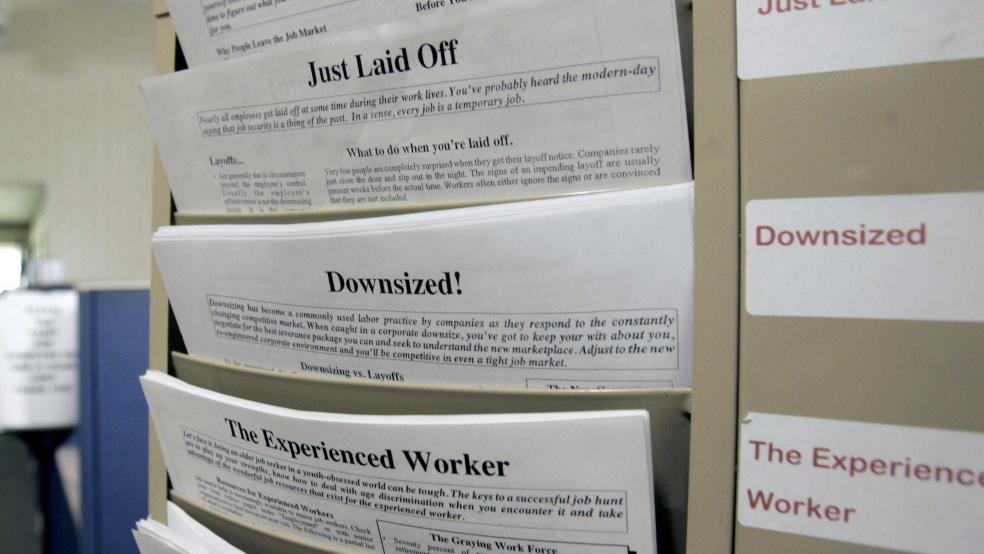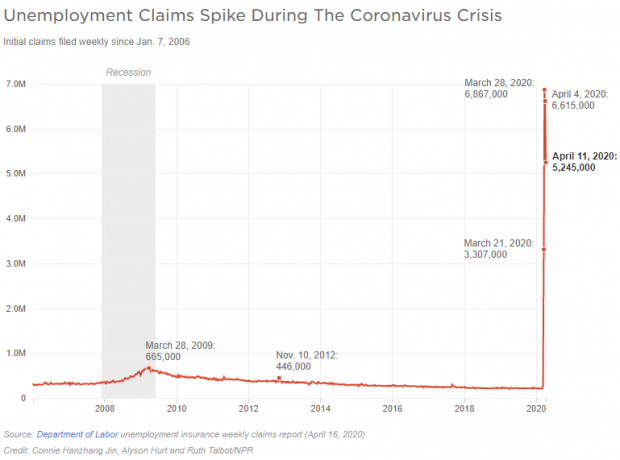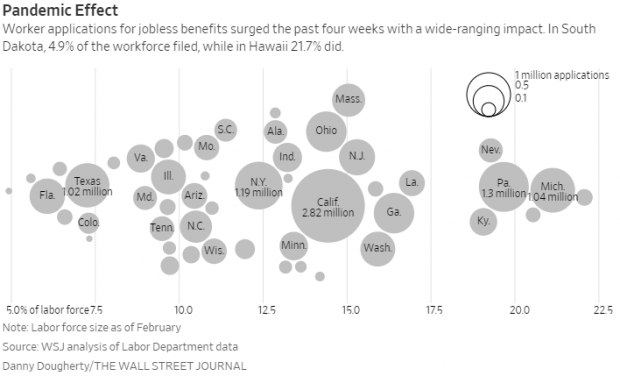The longest stretch of continuous monthly job gains in U.S. history started in October 2010 and continued until this March, when the coronavirus pandemic forced a sudden shutdown of most of the economy. Over those 113 months, the U.S. economy added more than 22 million jobs. Over the past four weeks, nearly as many have been wiped out. A decade of record labor market expansion that dropped the unemployment rate to a half-century low has been undone just that quickly.
Another 5.2 million Americans filed for unemployment benefits last week, the Labor Department said Thursday. That’s down from 6.6 million the previous week and nearly 6.9 million the week before that, suggesting that the pace of new filings may have peaked, though some economists warn that it might still be weeks before new jobless claims fall to much lower levels.
The economic devastation has been staggering: About 13% of the labor force has applied for unemployment assistance since mid-March, far higher than any previous four-week stretch, according to The Wall Street Journal. Until the pandemic, the largest number of Americans to apply for jobless benefits over a four-week period was 2.7 million, or 2.4% of the labor force, in the fall of 1982, according to the Journal.
What’s more, the 22 million jobs lost since the middle of March may undercount the actual total. State unemployment offices are still struggling to process the surge of new claims and most gig workers who Congress made eligible for unemployment assistance as part of the coronavirus relief package passed last month haven’t yet been able to apply for aid.
“It is showing us what I think we all know, that the economy is falling off a cliff at an unprecedented rate,” Jay Bryson, the acting chief economist at Wells Fargo, told NBC News.
Nearly 12 million people continued to receive unemployment insurance during the week ending April 4, also a record. Economists will be watching that number to see how quickly the economy is rebounding and people are returning to their jobs or finding new ones. “If continued claims three months from now remain very, very high, it means that the labor market is not bouncing back as fast as we had hoped,” Bryson told NBC News.
How high will the unemployment rate go? The government will release official unemployment data for April on May 8, and the number is certain to be dreadful. “The U.S. unemployment rate is already over 20 percent, according to two professors who are tracking the data in real time,” The Washington Post reports. “It is expected remain close to 10 percent through the end of the year, meaning 1 in 10 people would still be out of work at the holidays, the National Association for Business Economics says.”
The hardest-hit states: Every state has been hit by the downturn, but the highest rates of new jobless claims have come in Hawaii, Michigan and Rhode Island, where more than 20% of workers have filed for unemployment. The Journal reports that the most claims were filed in California (2.8 million, or 14.5% of the state labor force), followed by Pennsylvania (1.3 million, or 19.8% of workers) and New York (1.2 million, or 12.4% of workers).







